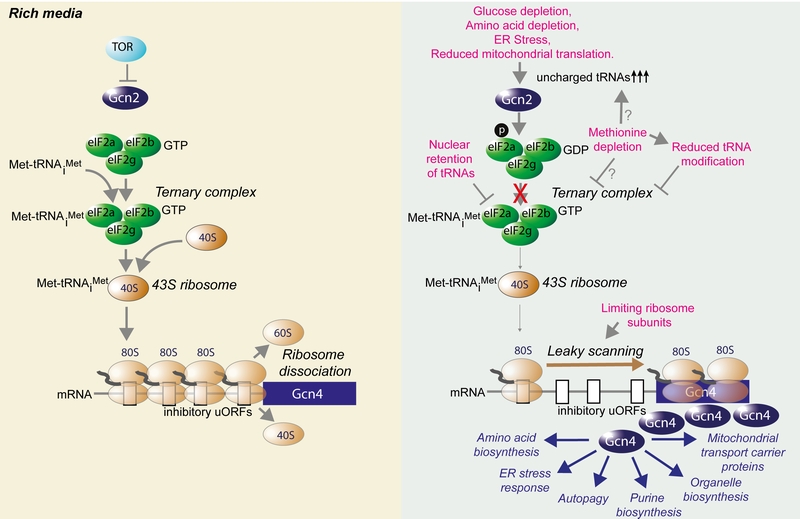Back to article: The integrated stress response in budding yeast lifespan extension
FIGURE 1: Overview of the yeast integrated stress response and how it is influenced by lifespan extending interventions. During growth in nutrient rich conditions, the ternary complex is formed from eIF2, methionine bound to tRNAiMet, and GTP, which then delivers Met-tRNAiMet to the 40S ribosome to make the 43S complex, which is a key rate-limiting step in translational initiation. Under rich growth conditions, efficient translation of the inhibitory upstream ORFs (uORFs) of the GCN4 mRNA causes dissociation of the ribosome, preventing it scanning along the mRNA to the protein coding ORF (blue). The regimens indicated in pink, which all extend RLS, either result in increased abundance of uncharged tRNAs that activate Gcn2 to phosphorylate eIF2α to prevent formation of functional eIF2-GTP, or they activate Gcn4 in a Gcn2-independent manner, in conditions that reduce formation of the ternary complex directly (reduced amounts of processed tRNAs in the cytoplasm, reduced amino acids) or via reduced amounts of ribosomal subunits. In either case, the end result is inefficient 80S ribosome formation, which promotes leaky scanning along the mRNA to the protein coding ORF of GCN4. The resulting Gcn4 protein induces transcription of genes required for the indicated stress response pathways.

